There are a couple species of lizards that live in this area and are quite common to see during the warmer months. However, I was surprised to see this one two days ago since the days and nights have become cooler with autumn in full-swing now. I have read that they can be active even in winter if the days are warm-enough[1], but I don't think I've ever seen one in the colder months. This little lady was on the side of my house, perched above my sliding-glass door.
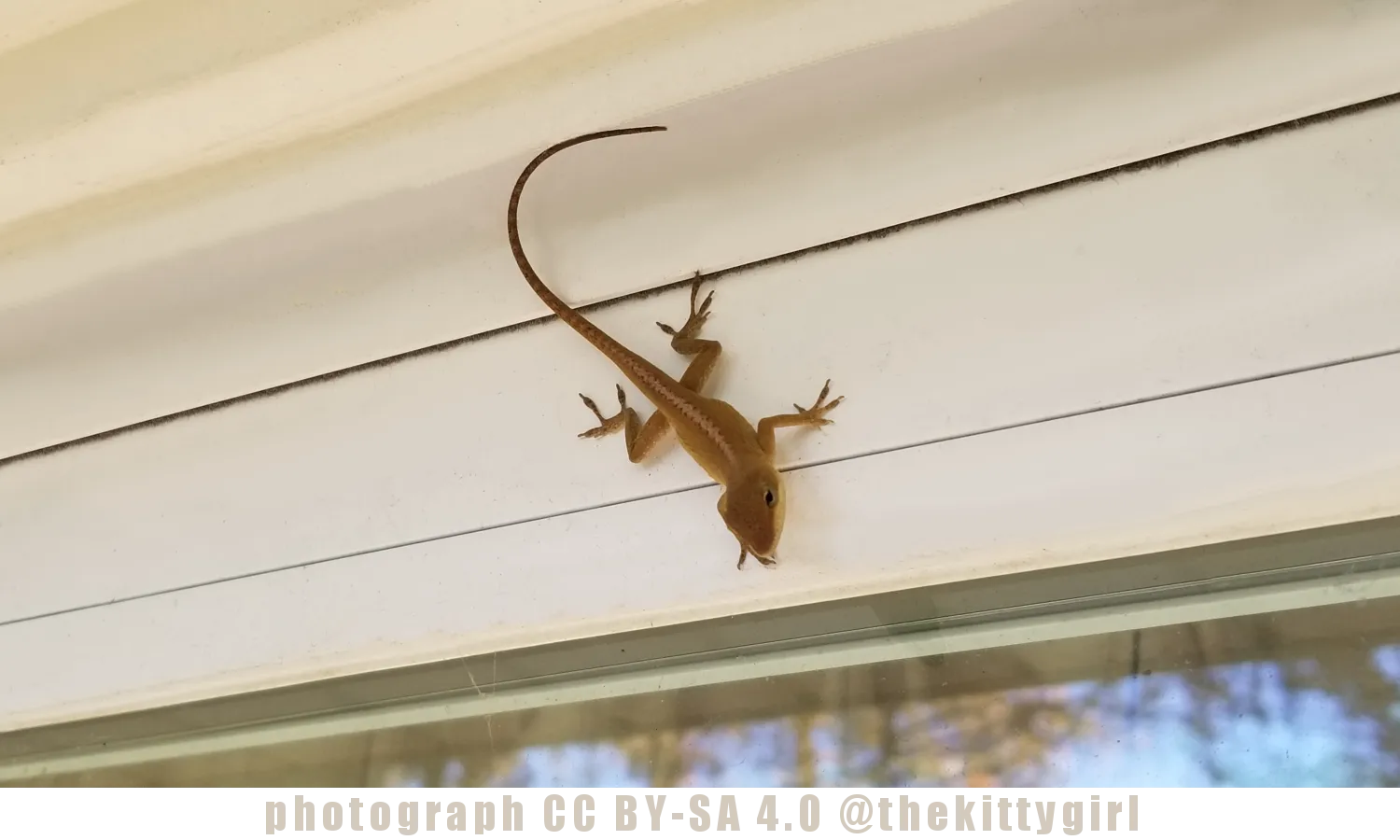
She is of a species known as Anolis carolinensis in scientific parlance and by the common name of "Carolina Anole" or "Green Anole." This species is native to the southeastern US, ranging from the Carolinas down to Florida and across to the Texas hill country. The species has been introduced to other areas of the world, though, as is sometimes seen in Central America, California, and was even introduced to Hawaii[1] (not sure if this introduction was intentional, or whether the little scamps quietly crawled-aboard a ship).
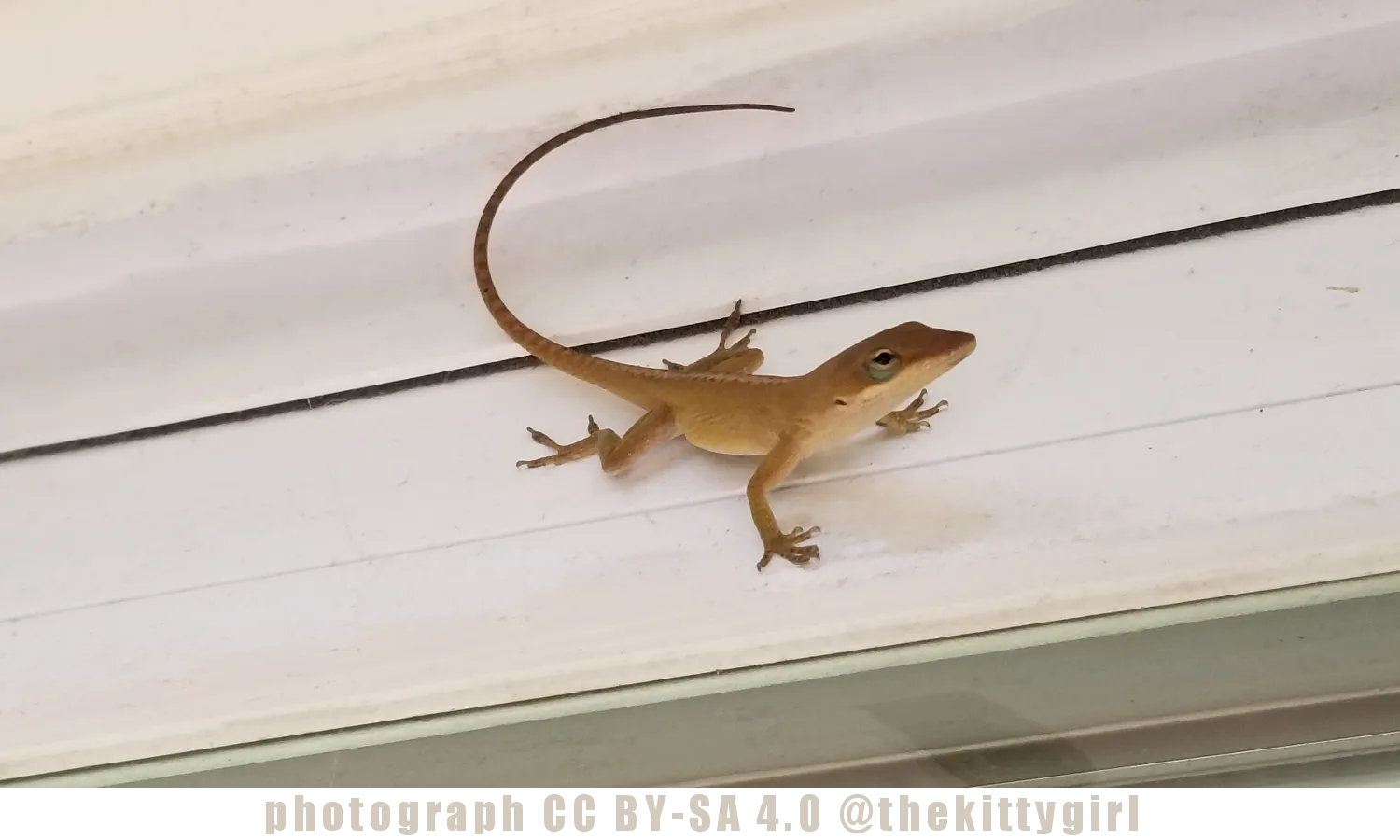
Although they will eat grains and seeds, they prefer prey such as flies, beetles, spiders, crickets, grasshoppers, and even cockroaches (ewww!). I was surprised to learn that even moths and butterflies are sometimes on the menu.
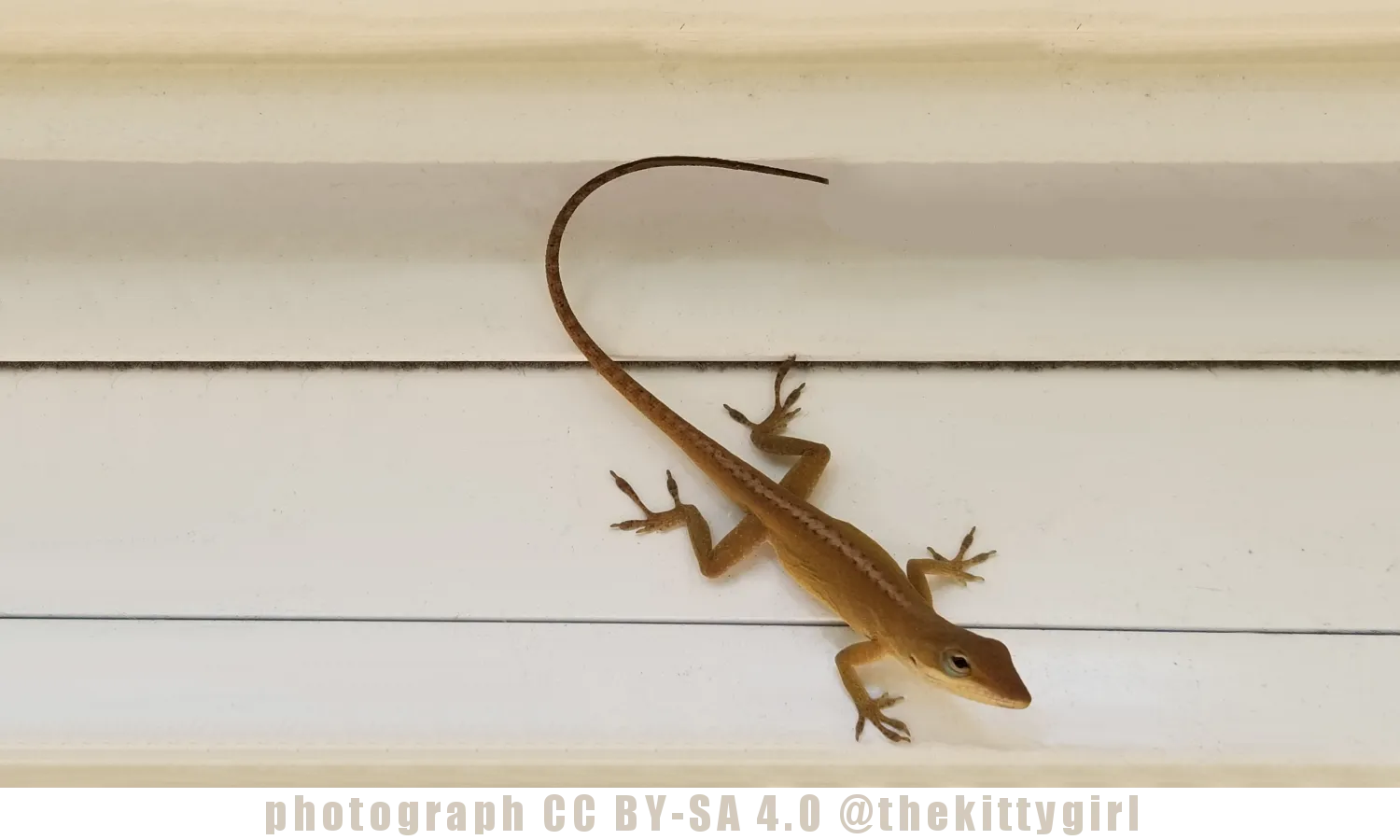
So, how do I know that this is a girl-lizard rather than a boy-lizard? See the whitish stripe down the middle of her back? Males seldom display this feature, but it is common among females.
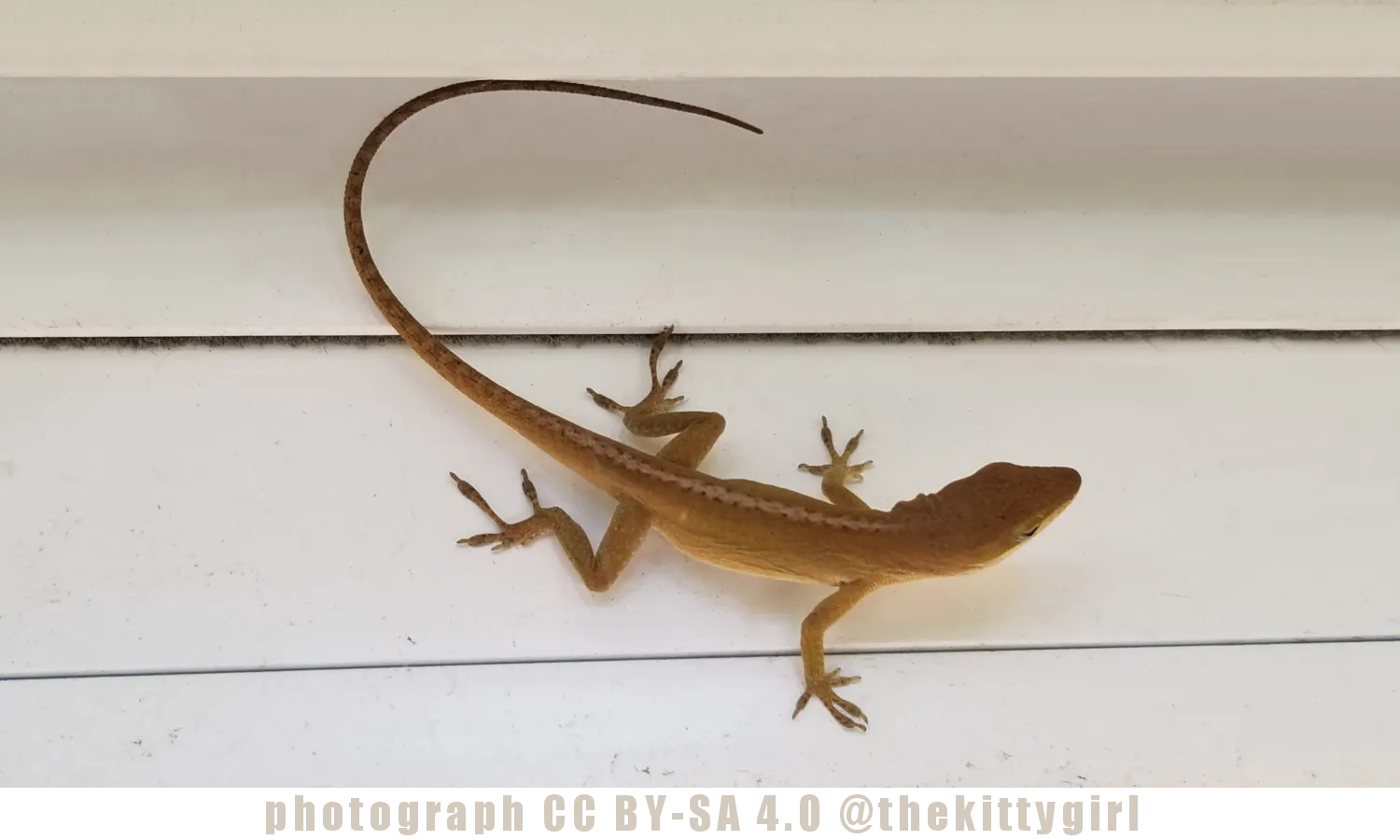
Some of you dear readers might be wondering at this point why this lizard is sometimes called a "Green Anole" since this one is definitely brown. These little critters can change colors, "...depending on mood, level of stress, activity level and as a social signal (for example, displaying dominance) [1]. Despite their ability to change color, they are definitely not part of the chameleon family of reptiles, although some people are prone to calling them "chameleons." And since their color can change, I prefer calling this one by the more neutral name of Carolina Anole than Green Anole.
To complicate matters a bit more, there is another species of anole that is always brown, lacking the ability to change colors. It is known as the Brown Anole (Anolis sagrei) and is native to Cuba and the Bahamas, but has made its way to the southeastern US. It bears the designation of "invasive species" because it competes with the Carolina Anole and has reduced the habitat and population of the latter. There are slight physical differences in the two species, such as a raised ridge that runs from the tail to the head as well as variations in color & marking, which can serve to differentiate them. [source] As such, I know this specimen is not a Brown Anole, but a Green Anole that is currently displaying a color more brown than green.
As an example of the green coloration the Carolina Anole can display, here is a photograph that I took a couple years ago of one in my back yard. This one is a male, since it lacks the whitish stripe down his back. This one is also displaying a dewlap (a flap of skin on the throat). Both males and females possess dewlaps, but they are more often used by the males when courting, or when fending-off a rival male. The dewlap can be withdrawn and almost completely invisible, can be slightly extended as this one is doing, or it can be inflated much larger and will appear bright red at those times.
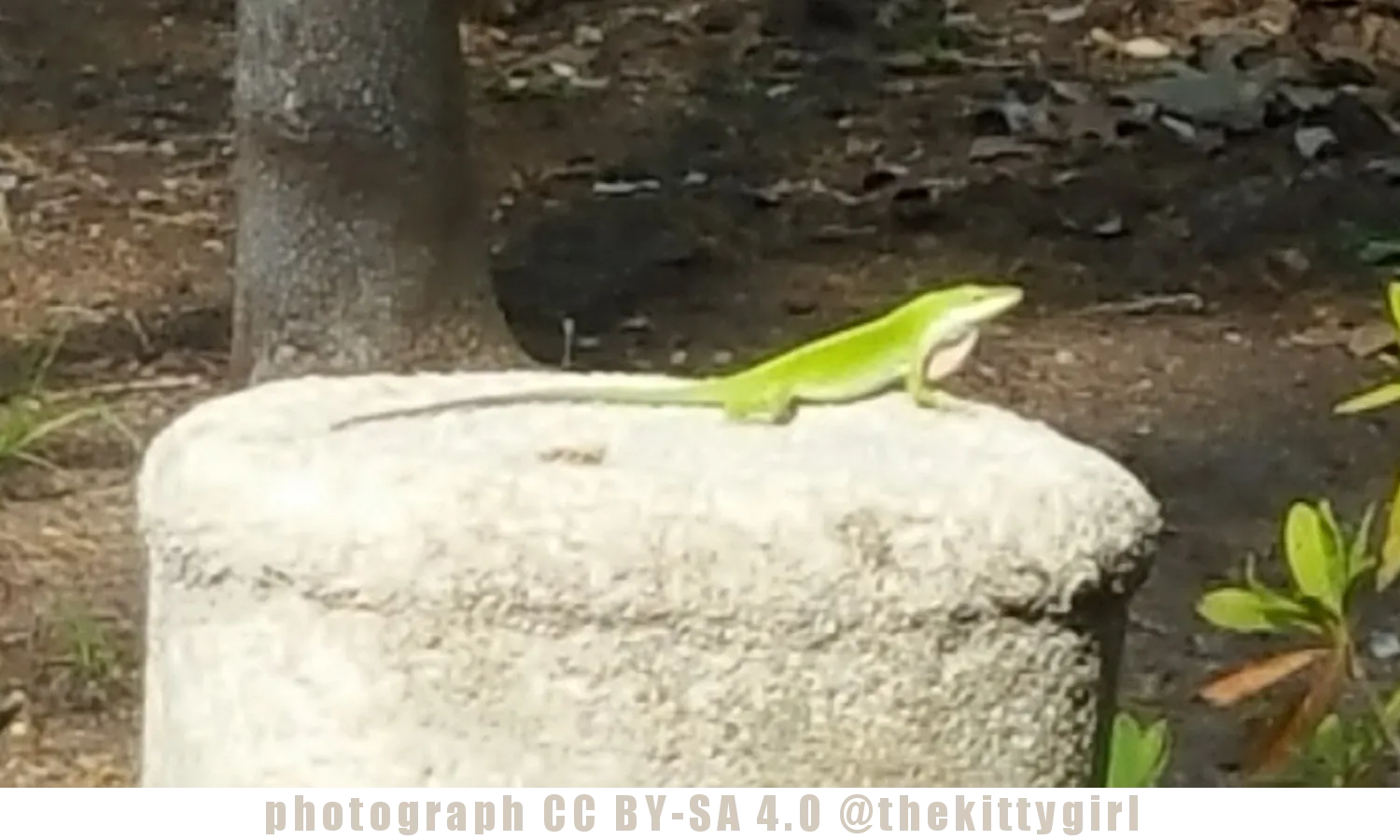
Even though this is an anole, not a gecko, I couldn't resist the following... 😂
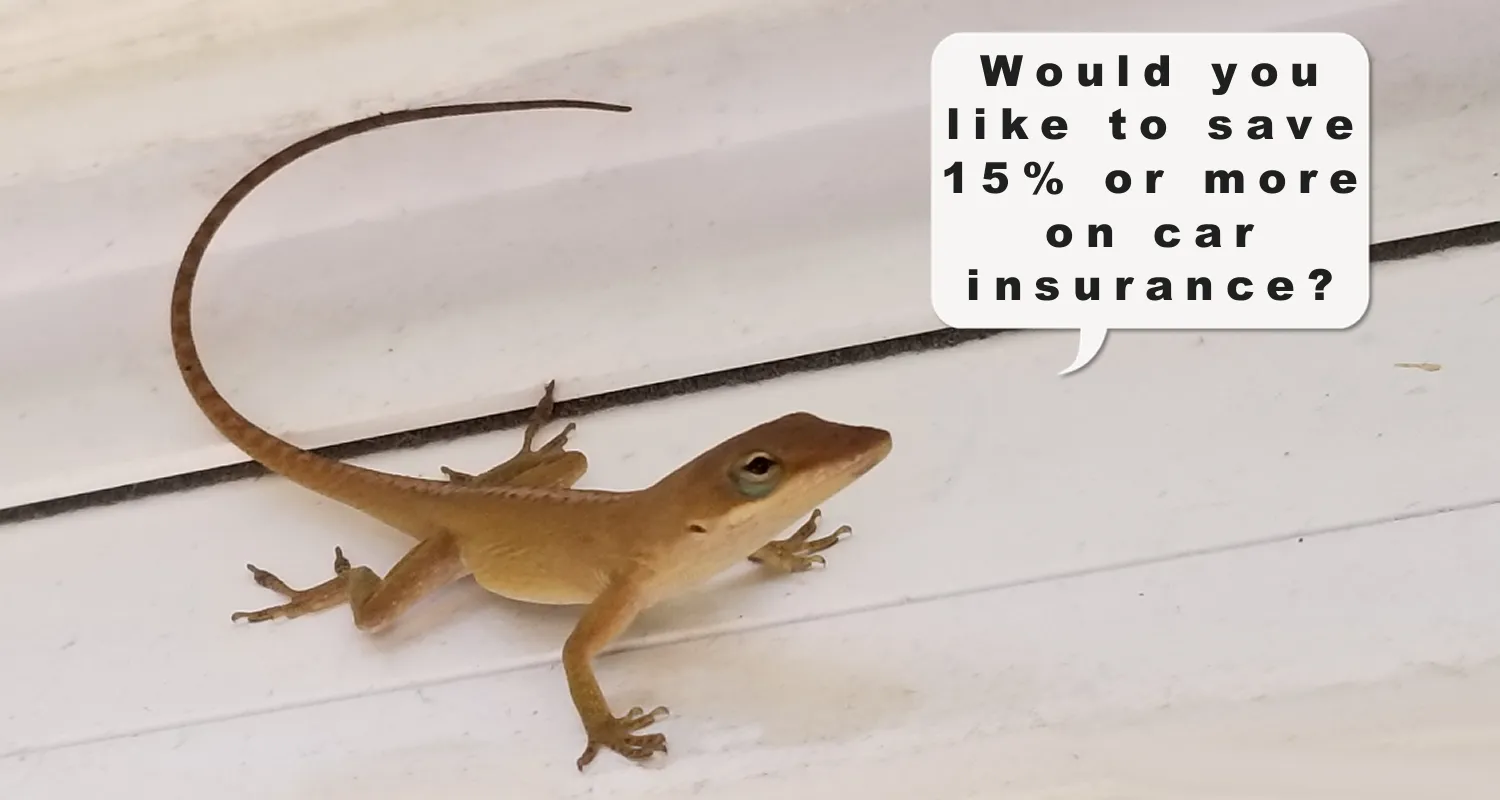
SOURCES 1 Wikipedia: Anolis carolinensis








15-Nov-2020
Return from Carolina Anole to 𝕜𝕚𝕥𝕥𝕪's Web3 Blog

